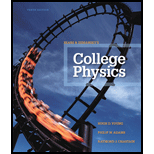
Converting dc to ac. An individual cell such as an egg cell (an ovum, produced in the ovaries) is commonly organized spatially, as manifested in part by asymmetries in the cell membrane These asymmetries include non-uniform distributions of ion transport mechanisms, which result in a net
These cellular currents move in loops through extracellular fluid Ohm s law requires that there be a voltage difference between any two points in this current-carrying fluid surrounding cells Although the currents may be significant, the extracellular voltage differences are tiny—on the order of nanovolts If we can map the voltage differences in the fluid outside a cell, we can calculate the current density by using Ohm s law, assuming that the resistivity of the fluid is known We cannot measure these voltage differences by spacing two electrodes 10 or 20 μm apart because the dc impedance (the resistance) of such electrodes is high and the inherent noise in signals detected at the electrodes far exceeds the cellular voltages.
One successful method of measurement uses an electrode with a ball-shaped end made of platinum that is moved sinusoidally between two points in the fluid outside a cell The electric potential that the electrode measures, with respect to a distant reference electrode, also vanes sinusoidally The dc potential difference between the two extremes (the two points in the fluid) is then converted to a sine-wave ac potential difference The platinum electrode behaves as a capacitor in series with the resistance of the extracellular fluid This resistance, called the access resistance (RA), has a value of about ρ/10a, where ρ is the resistivity of the fluid (usually expressed in ω cm) and a is the radius of the ball electrode The platinum ball typically has a diameter of 20 pm and a capacitance of 10 μm; the resistivity of many biological fluids is 100 ω cm.
43. If the frequency at which the electrode is oscillated is increased to a very large value, what happens to the electrode s impedance? The impedance
- A. approaches infinity.
- B. approaches zero.
- C. approaches a constant but nonzero value.
- D. does not change.
Want to see the full answer?
Check out a sample textbook solution
Chapter 22 Solutions
College Physics (10th Edition)
Additional Science Textbook Solutions
Microbiology: An Introduction
Chemistry: Structure and Properties (2nd Edition)
Organic Chemistry (8th Edition)
Human Physiology: An Integrated Approach (8th Edition)
Campbell Essential Biology with Physiology (5th Edition)
College Physics: A Strategic Approach (3rd Edition)
- Which of the following best describes how to calculate the average acceleration of any object? Average acceleration is always halfway between the initial acceleration of an object and its final acceleration. Average acceleration is always equal to the change in velocity of an object divided by the time interval. Average acceleration is always equal to the displacement of an object divided by the time interval. Average acceleration is always equal to the change in speed of an object divided by the time interval.arrow_forwardThe figure shows the velocity versus time graph for a car driving on a straight road. Which of the following best describes the acceleration of the car? v (m/s) t(s) The acceleration of the car is negative and decreasing. The acceleration of the car is constant. The acceleration of the car is positive and increasing. The acceleration of the car is positive and decreasing. The acceleration of the car is negative and increasing.arrow_forwardWhich figure could represent the velocity versus time graph of a motorcycle whose speed is increasing? v (m/s) v (m/s) t(s) t(s)arrow_forward
- Unlike speed, velocity is a the statement? Poisition. Direction. Vector. Scalar. quantity. Which one of the following completesarrow_forwardNo chatgpt pls will upvote Already got wrong chatgpt answerarrow_forward3.63 • Leaping the River II. A physics professor did daredevil stunts in his spare time. His last stunt was an attempt to jump across a river on a motorcycle (Fig. P3.63). The takeoff ramp was inclined at 53.0°, the river was 40.0 m wide, and the far bank was 15.0 m lower than the top of the ramp. The river itself was 100 m below the ramp. Ignore air resistance. (a) What should his speed have been at the top of the ramp to have just made it to the edge of the far bank? (b) If his speed was only half the value found in part (a), where did he land? Figure P3.63 53.0° 100 m 40.0 m→ 15.0 marrow_forward
 Physics for Scientists and Engineers: Foundations...PhysicsISBN:9781133939146Author:Katz, Debora M.Publisher:Cengage Learning
Physics for Scientists and Engineers: Foundations...PhysicsISBN:9781133939146Author:Katz, Debora M.Publisher:Cengage Learning College PhysicsPhysicsISBN:9781938168000Author:Paul Peter Urone, Roger HinrichsPublisher:OpenStax College
College PhysicsPhysicsISBN:9781938168000Author:Paul Peter Urone, Roger HinrichsPublisher:OpenStax College Physics for Scientists and EngineersPhysicsISBN:9781337553278Author:Raymond A. Serway, John W. JewettPublisher:Cengage Learning
Physics for Scientists and EngineersPhysicsISBN:9781337553278Author:Raymond A. Serway, John W. JewettPublisher:Cengage Learning Physics for Scientists and Engineers with Modern ...PhysicsISBN:9781337553292Author:Raymond A. Serway, John W. JewettPublisher:Cengage Learning
Physics for Scientists and Engineers with Modern ...PhysicsISBN:9781337553292Author:Raymond A. Serway, John W. JewettPublisher:Cengage Learning Physics for Scientists and Engineers, Technology ...PhysicsISBN:9781305116399Author:Raymond A. Serway, John W. JewettPublisher:Cengage Learning
Physics for Scientists and Engineers, Technology ...PhysicsISBN:9781305116399Author:Raymond A. Serway, John W. JewettPublisher:Cengage Learning





